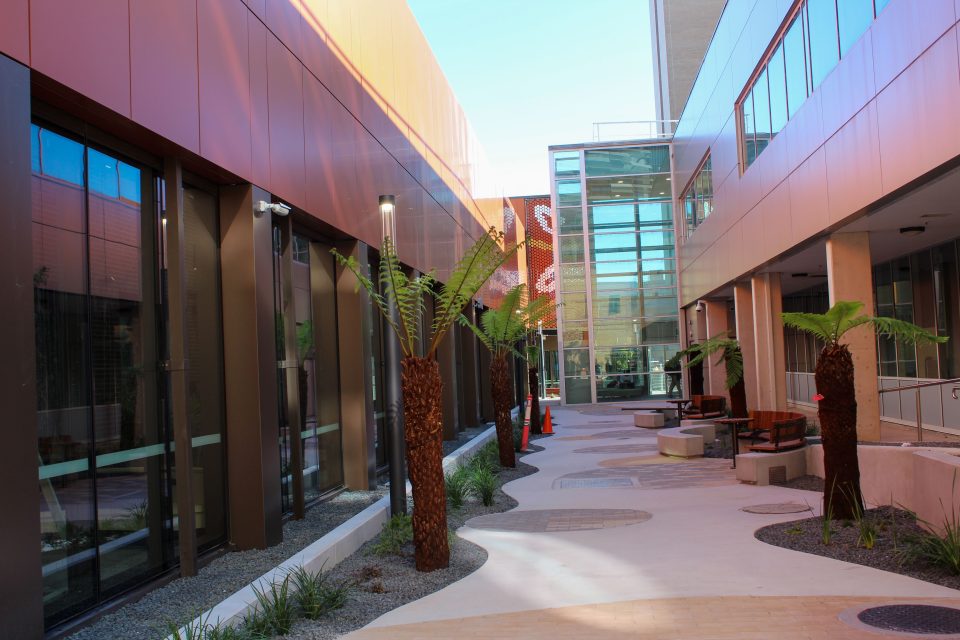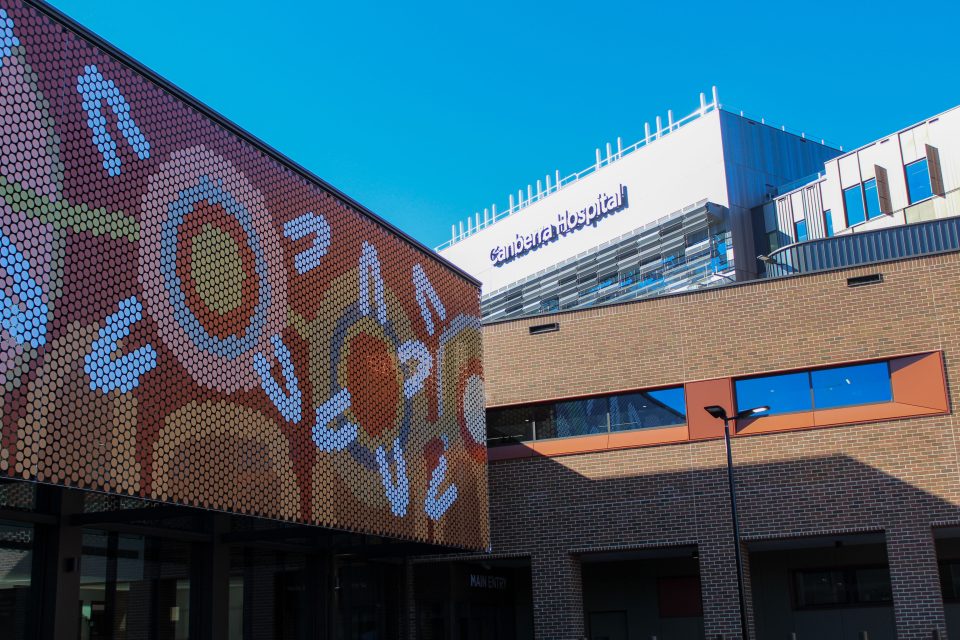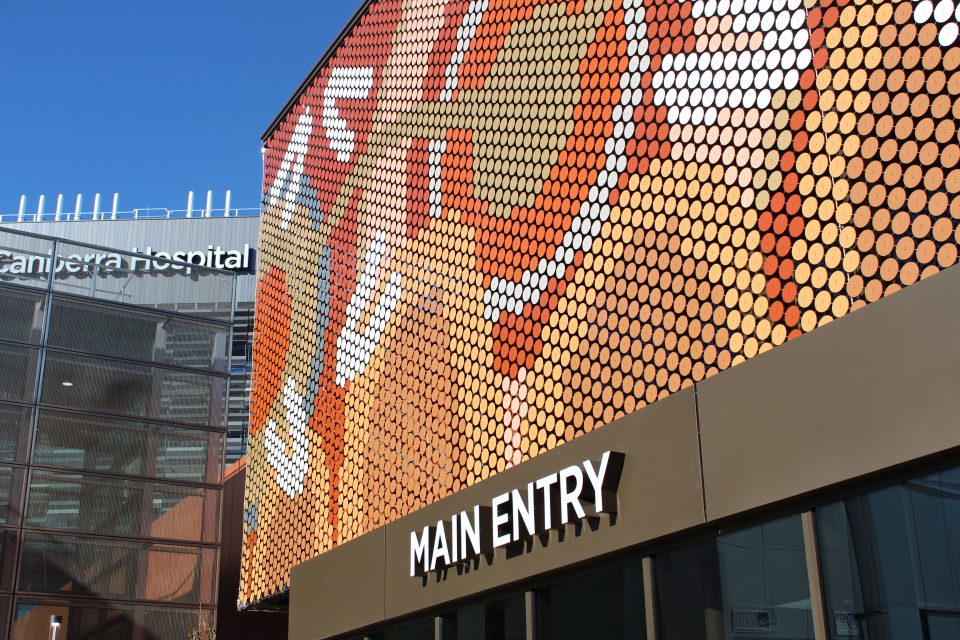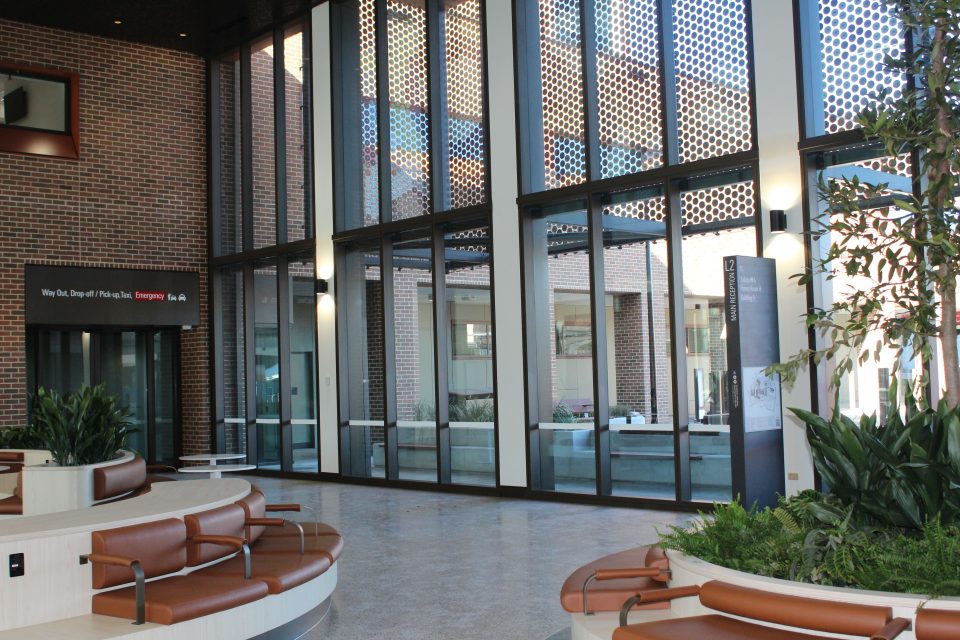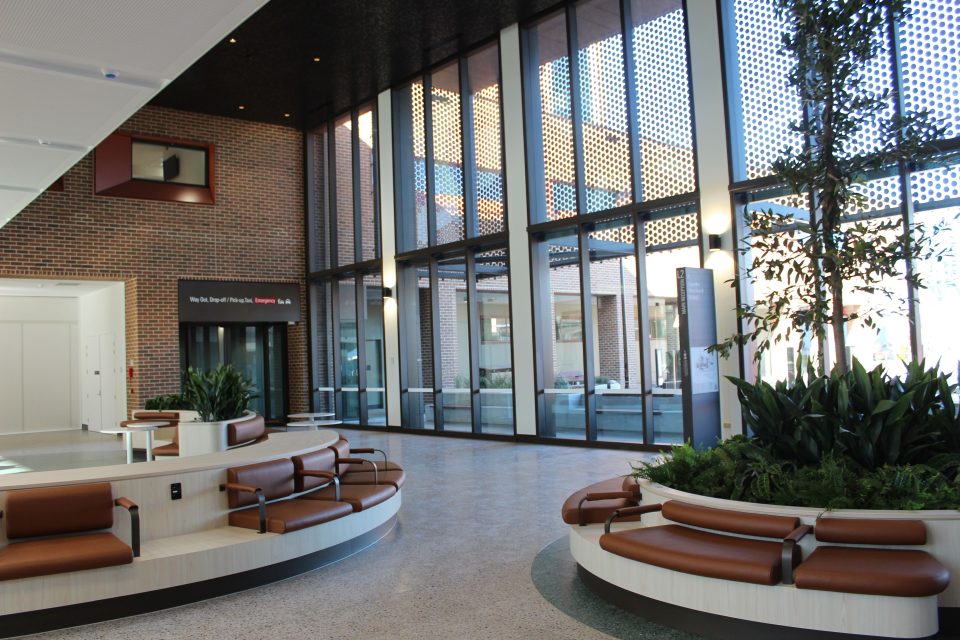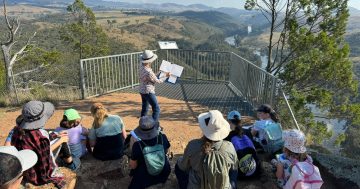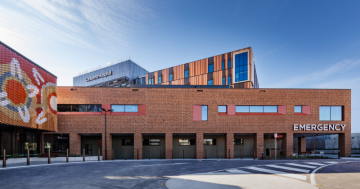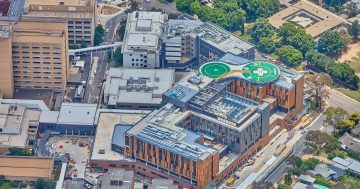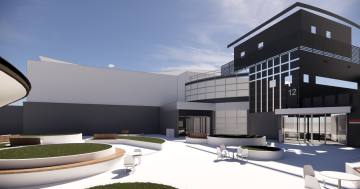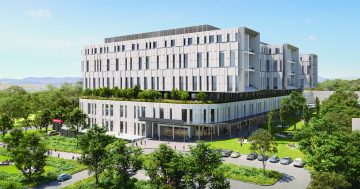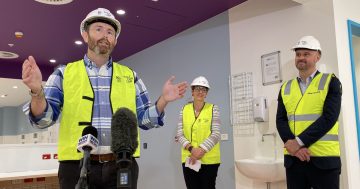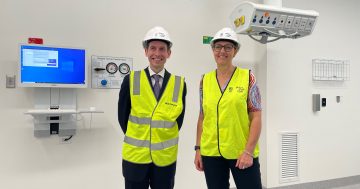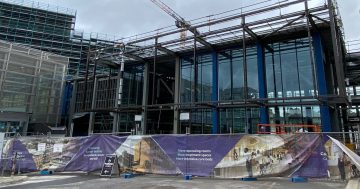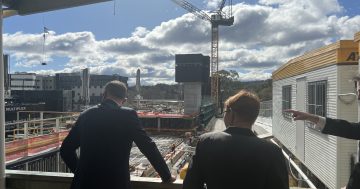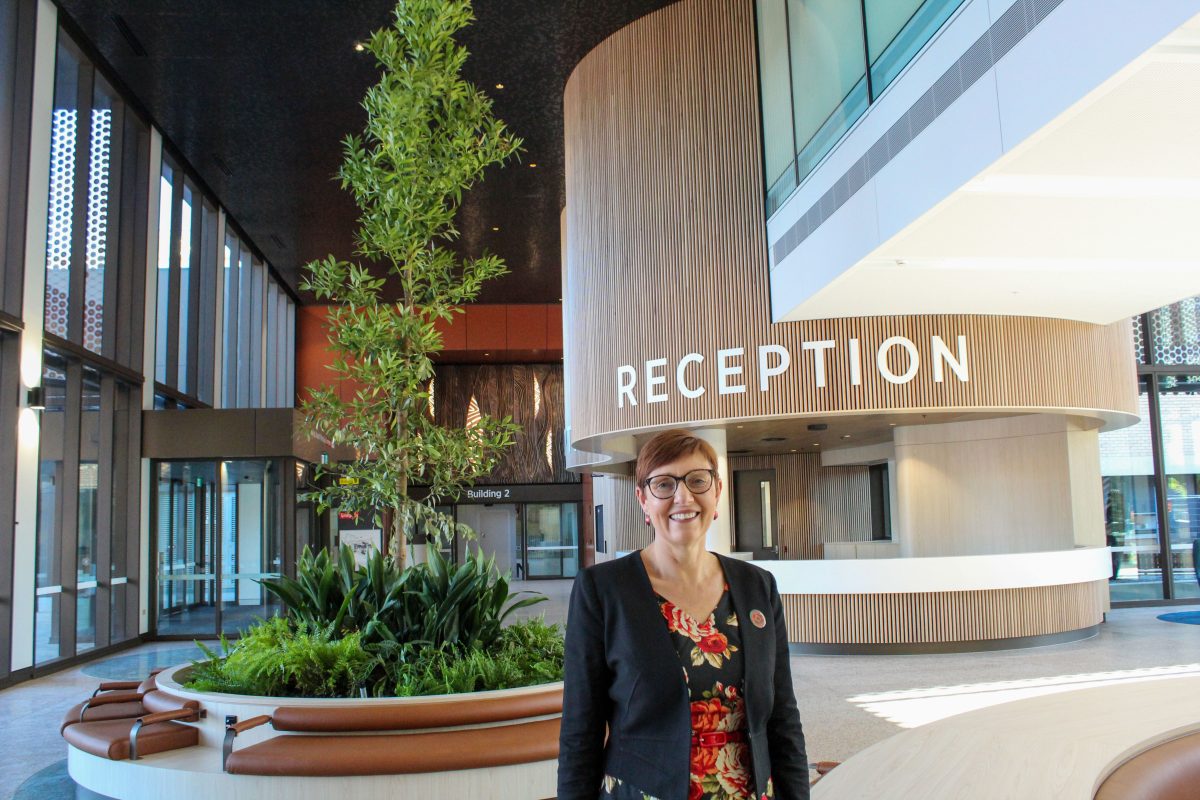
ACT Minister for Health Rachel Stephen-Smith at the opening of the new Welcome Hall. Photo: ACT Government.
The $640 million project to expand the Canberra Hospital campus in Woden will reach a major milestone next week.
The construction fencing will come down on Monday (3 June) on a flash new main entrance and reception space to the up-and-coming ‘Critical Services Building’.
The ‘Welcome Hall’ takes the form of a large, double-storey, light-filled space, complete with hubs for seating, greenery, a café, retail space, and a large, wood-panelled reception point where staff will help visitors find their way.
It includes an above-ground link to the existing hospital building, which the ACT Government says is semi-transparent to “provide patients with privacy as they are transferred through the hospital”.
ACT Minister for Health Rachel Stephen-Smith described the opening as a “significant step” towards opening the rest of the new building later this year.
“As the new main entrance to the hospital, the Welcome Hall will significantly improve the experience for everyone working in and visiting the hospital,” Ms Stephen-Smith said.
“So for families, for carers, for patients who are waiting – maybe for an outpatient appointment – it’s a beautiful spot to just sit and relax.”
During a media tour on Tuesday (28 May), Ms Stephen-Smith highlighted the Indigenous-themed artwork created by local artists – including one depicting the woodlands around Canberra – and a layout designed to make the most of the outdoors.
“Throughout the design of the Critical Services Building, there’s really been consideration of that indoor-outdoor connection, and that’s reflected in the greenery inside this space … but also throughout the whole building where we’ve got large windows with incredible views.”
It might have been a long time coming, but construction of the Critical Services Building is still on time and on budget and set for completion mid-year, with an opening date in the third quarter.
Made up of nine stories and covering 45,000 square metres, it will significantly expand the hospital’s capacity and deliver a new emergency department and 12 ambulance bays, 22 operating theatres with surgical recovery areas, a new medical imaging department, intensive care and acute coronary care units, mental health short stay and day beds, inpatient beds and a helipad on the roof.
The Welcome Hall, at the centre of the hospital campus, includes a new covered pick-up and drop-off point, including for taxis and public transport. The turning circle will also service the new emergency department through a separate entrance.
Ms Stephen-Smith said the hall will be open for community tours later in June, and the current reception will officially relocate once the rest of the Critical Services Building becomes operational.
The current emergency department entrance off Yamba Drive will also be redesigned, and a new bus stop added.
The Aboriginal and Torres Strait Islander patient and family resource rooms, currently located in the Wamburrang Room, Building 1, Level 3, will be rehomed “right in the heart of the hospital”, and specific operating theatres for the Centenary Hospital for Women and Children constructed in Building 12 for obstetric procedures like Caesareans and endoscopies.
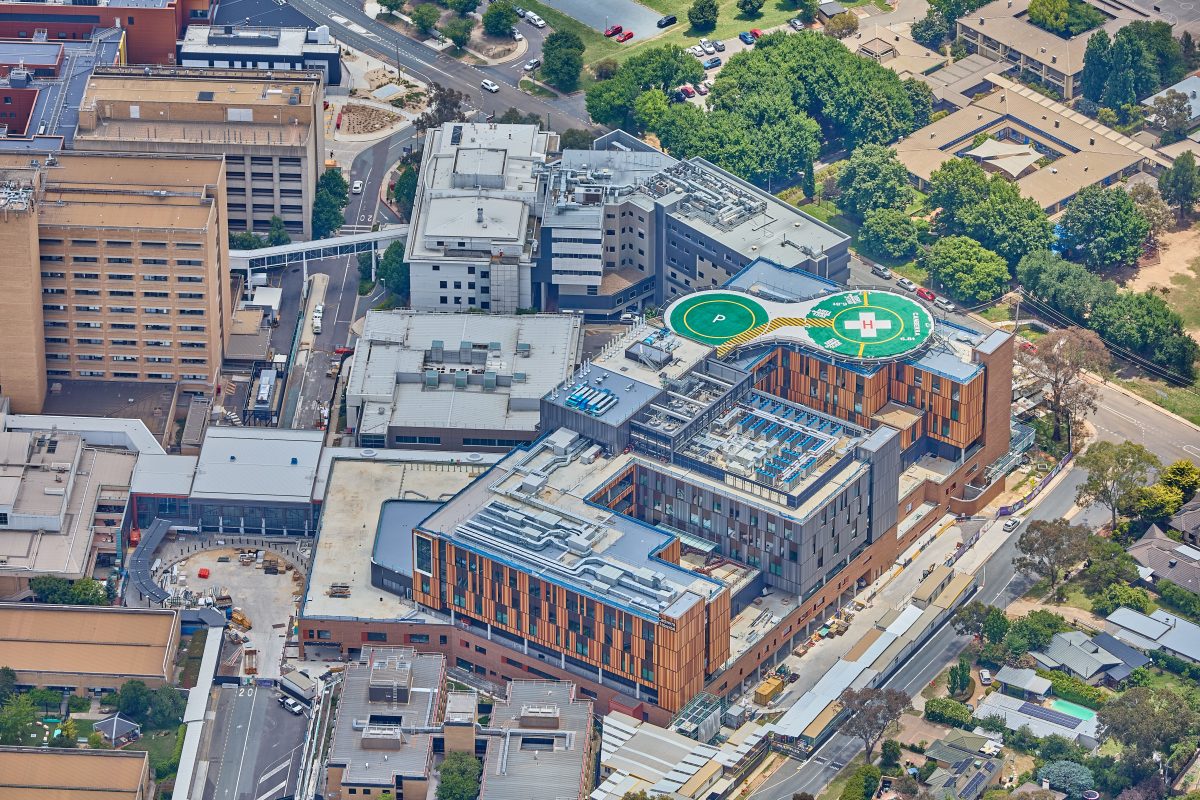
The Critical Services building comes with a new helipad. Photo: Canberra Health Services (CHS).
The main tower building, which opened in 1973, will eventually be demolished to make way for new buildings on the campus, but Ms Stephen-Smith says, “there’ll continue to be wards in that building for some years yet”.
“The next really big project … will be the new pathology building, which will go on the other side of the Critical Services Building, and we’re currently in the process of demolishing Buildings 6 and 23 for that,” she said.
“So the order of things will be the construction of the new pathology building, demolition of Building 10 where pathology currently is, and then there will be the need for construction of new inpatient facilities before we can completely cease using the current tower building.”
Clinical teams will familiarise themselves with the new Critical Services Building while the finishing touches are added.
The operators of the café and retail space will be confirmed at a later date.



